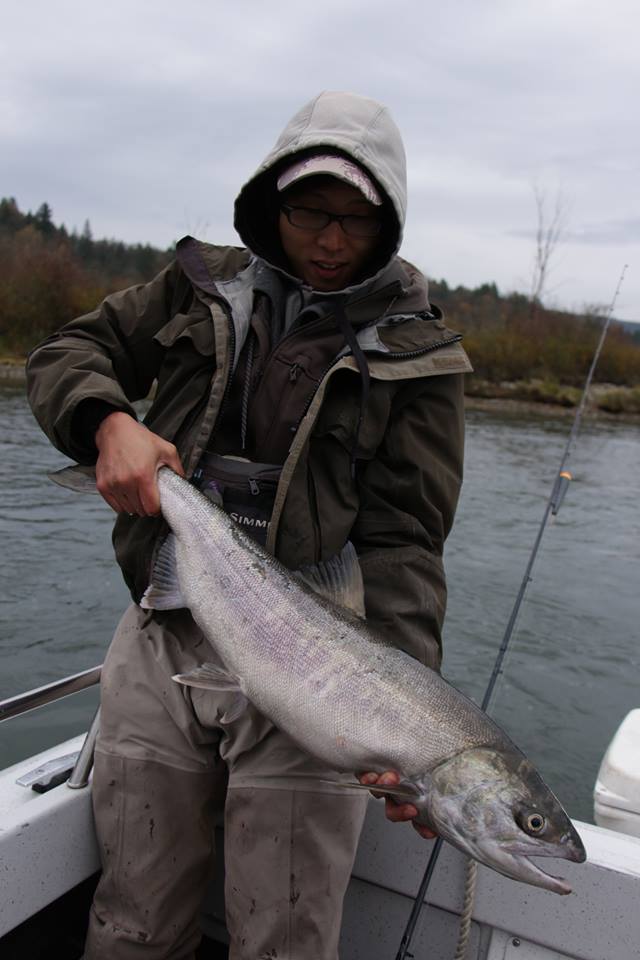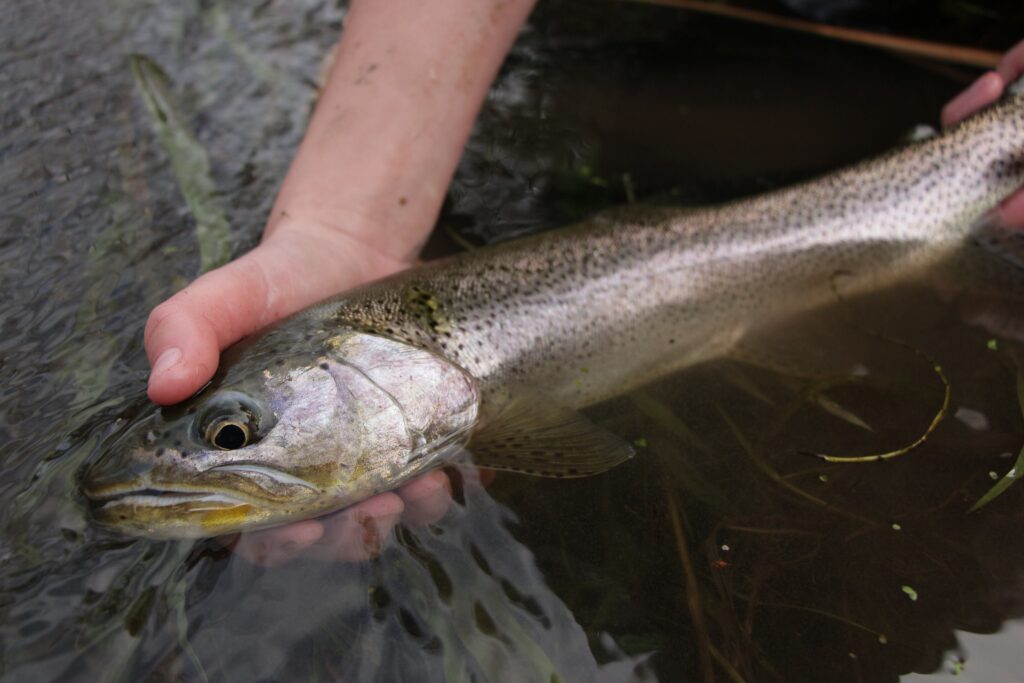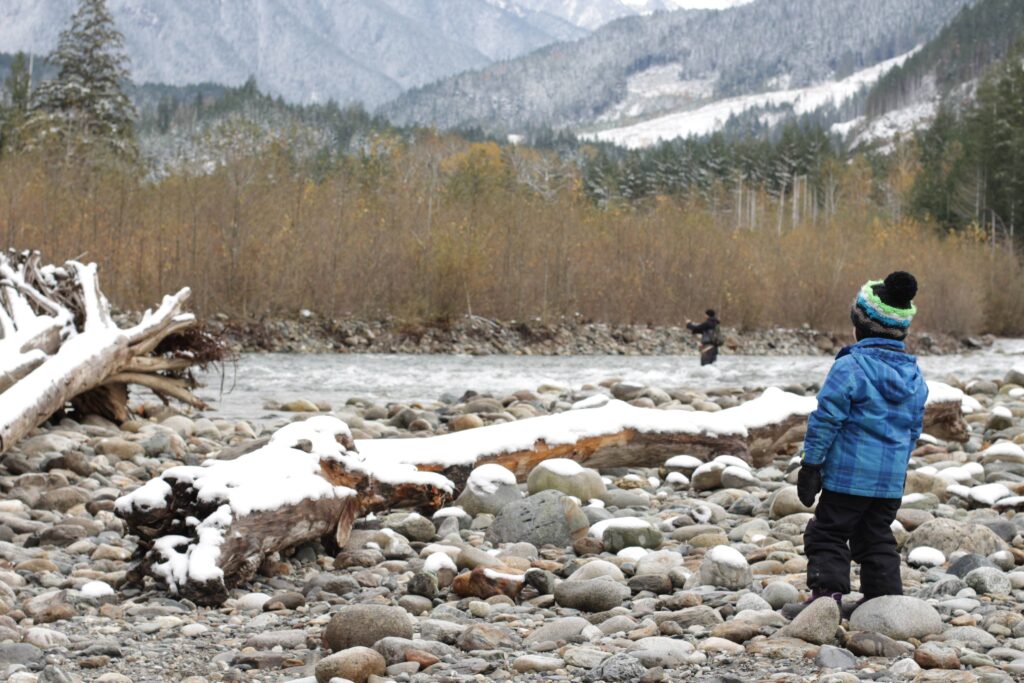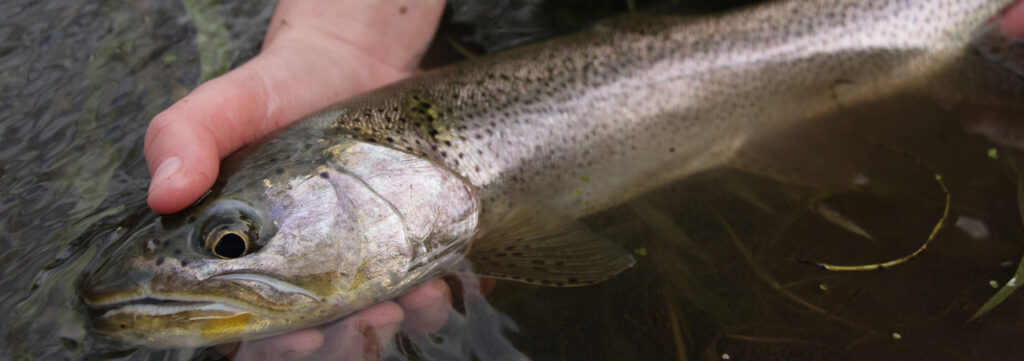As we approach the beginning of winter, salmon fishing slows down in Lower Mainland rivers, but there are in fact many different options if you are willing to brave the cold and rain or snow. Two species of salmon, coho and chum, should remain abundant in many Region 2 rivers until early December, while other species start appearing in these same systems. Coastal cutthroat trout can be found feeding on salmon eggs in small channels. Meanwhile, thanks to the Society’s fall stockings, there are also rainbow trout to be caught. If you are lucky enough, you might even encounter a winter steelhead in the Chilliwack River.
Coho
Coho fishing usually peaks in mid-October. You can still find very good fishing after that by doing a bit more footwork. Throughout November, river levels tend to be higher due to rain, so fish are generally more spread out rather than concentrated in specific spots. Since you’re only likely to find one or two fish at a time, moving from spot to spot is your best bet. One good thing that I enjoy about fishing for coho in November is that it is no longer a first-light fishery: fish will bite at any time of day due to the lower lighting and decreased fishing pressure. My favourite way of targeting coho is by casting and retrieving a spoon, for two reasons: first, I can cover the waters where I am fishing more efficiently; and second, I don’t have to touch bait during these colder days. While the Chilliwack River can remain productive, there are also other Fraser Valley river systems one should explore for these late coho, like the Chehalis and Stave, along with a few other smaller sloughs and creeks in between along the north side of Fraser River. The Squamish River can also be a good destination if conditions cooperate.

Chum
Chum tend to get a bad reputation for being those dark, undesirable fish that nobody likes to target. This is definitely true if you are fishing in the upper reaches of a river system, where they are close to spawning. However, in the lower sections of any Lower Fraser River tributaries, there can still be chum that are incredibly fresh and bright during November. And these fish are big and aggressive – an ideal target species for anyone who is new to salmon fishing. The technique used to catch them is fairly simple, and usually irresistible to these fish: drift a big fluffy marabou jig tied under a float. To prevent accidental foul-hooking of fish, set your jig’s depth under the float so it drifts about 60 centimetres (a couple of feet) above the river bottom.

Coastal Cutthroat
Coastal cutthroat trout usually become active in the Fraser Valley around mid-November, and remain so throughout the winter. Because these fish are feeding mainly on salmon eggs, you are most likely to find them behind salmon spawning in small channels. The trout generally weigh between ½ to one kilogram (one or two pounds), so a light spinning or fly set-up is the most appropriate tackle to use. Simply “match the hatch” to attract cutthroat trout: single eggs, both natural and artificial, are the best offerings you can use.

Rainbow Trout
The Freshwater Fisheries Society of BC restocks several lakes in Region 2 with catchable-sized rainbow trout throughout October and November. If walking along rivers in the cold does not sound very enticing, then visiting one of these lakes is a great alternative. Since fish are not as active when it’s cold, fishing is not going to be as fast as during spring and early fall, but you should be able to find some bites. A baited hook suspended just above the lake bottom will always attract a fish or two. Lafarge, Como, Green Timbers, and Rice lakes, along with Sanctuary Pond at Hastings Park, are the best places to try. Other less frequently stocked lakes, like Buntzen, Sasamat, Mike, Rolley, and Mill, should also produce.
Lastly and most importantly, the weather can be unpredictable during this time of the year. Don’t let the cold and wet ruin your fishing trip – dress appropriately when heading out! A vacuum flask filled with some hot drink will make a positive difference to your day in the outdoors. Be sure to check the freshwater fishing regulations to find out what gear you can use for the particular fishery you plan to take part in, and what species you can retain. Good luck!

Author: Rodney Hsu; Freshwater Fisheries Society of BC Ambassador
Photo Credit: Rodney Hsu; Freshwater Fisheries Society of BC Ambassador
